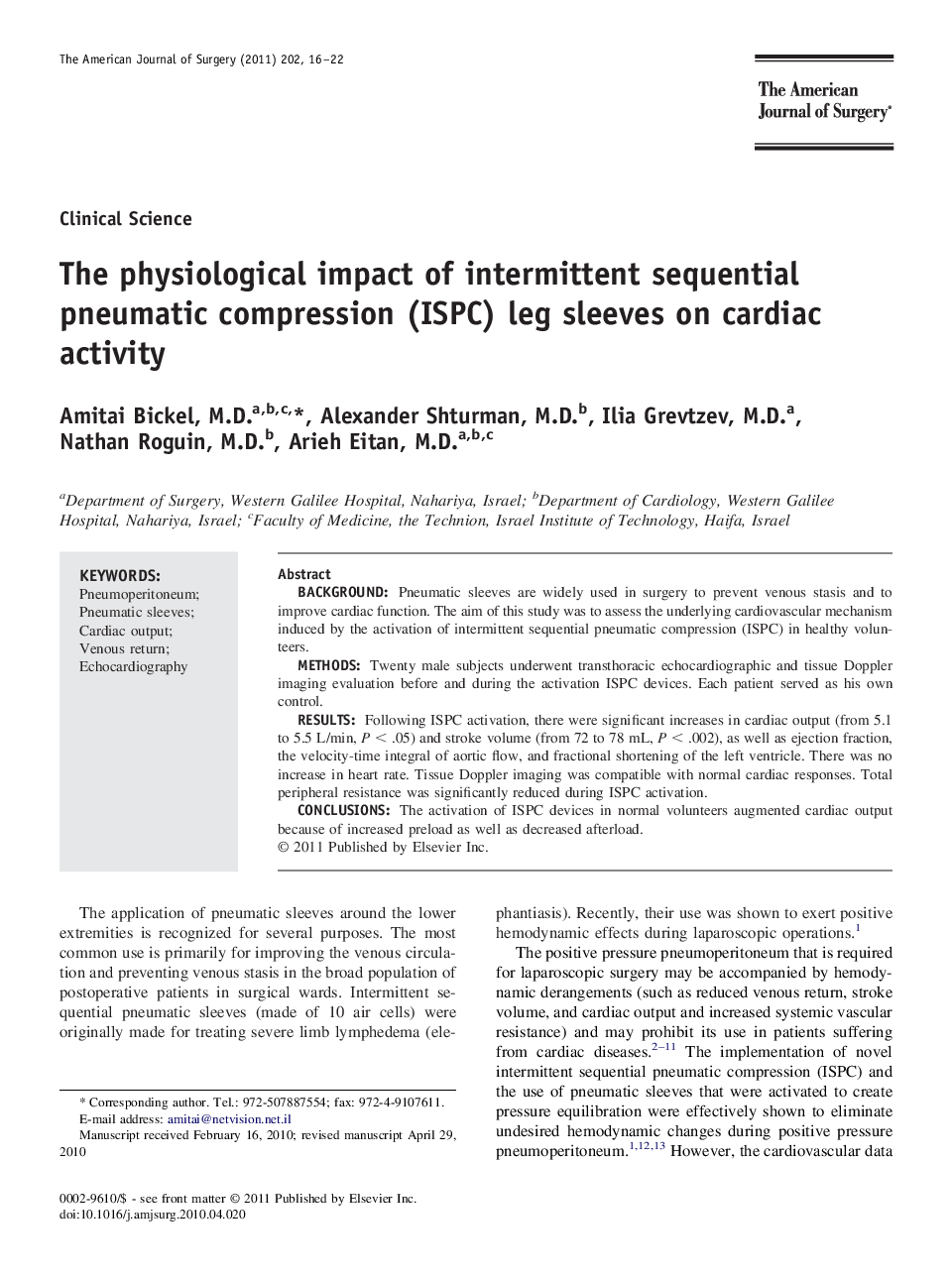| کد مقاله | کد نشریه | سال انتشار | مقاله انگلیسی | نسخه تمام متن |
|---|---|---|---|---|
| 4279636 | 1611541 | 2011 | 7 صفحه PDF | دانلود رایگان |

BackgroundPneumatic sleeves are widely used in surgery to prevent venous stasis and to improve cardiac function. The aim of this study was to assess the underlying cardiovascular mechanism induced by the activation of intermittent sequential pneumatic compression (ISPC) in healthy volunteers.MethodsTwenty male subjects underwent transthoracic echocardiographic and tissue Doppler imaging evaluation before and during the activation ISPC devices. Each patient served as his own control.ResultsFollowing ISPC activation, there were significant increases in cardiac output (from 5.1 to 5.5 L/min, P < .05) and stroke volume (from 72 to 78 mL, P < .002), as well as ejection fraction, the velocity-time integral of aortic flow, and fractional shortening of the left ventricle. There was no increase in heart rate. Tissue Doppler imaging was compatible with normal cardiac responses. Total peripheral resistance was significantly reduced during ISPC activation.ConclusionsThe activation of ISPC devices in normal volunteers augmented cardiac output because of increased preload as well as decreased afterload.
Journal: The American Journal of Surgery - Volume 202, Issue 1, July 2011, Pages 16–22